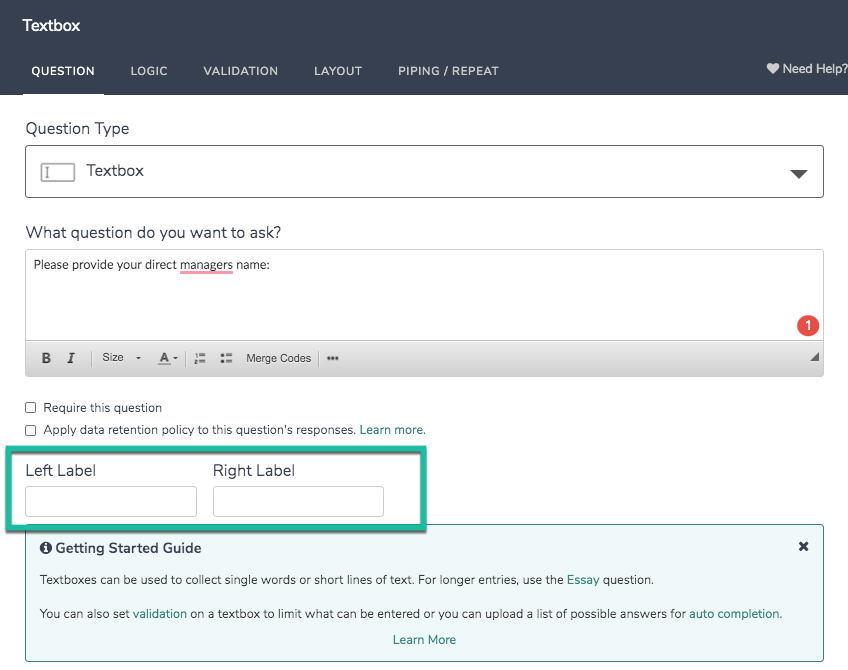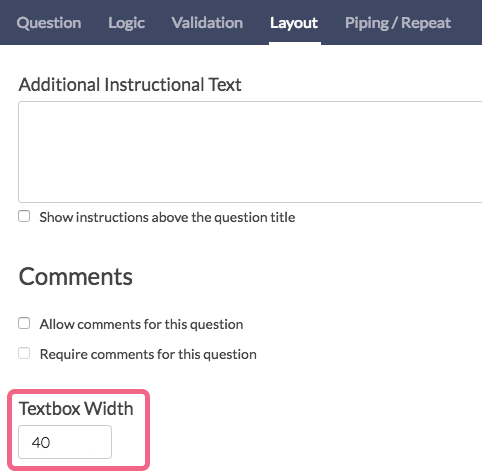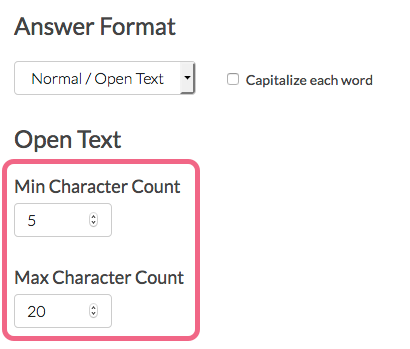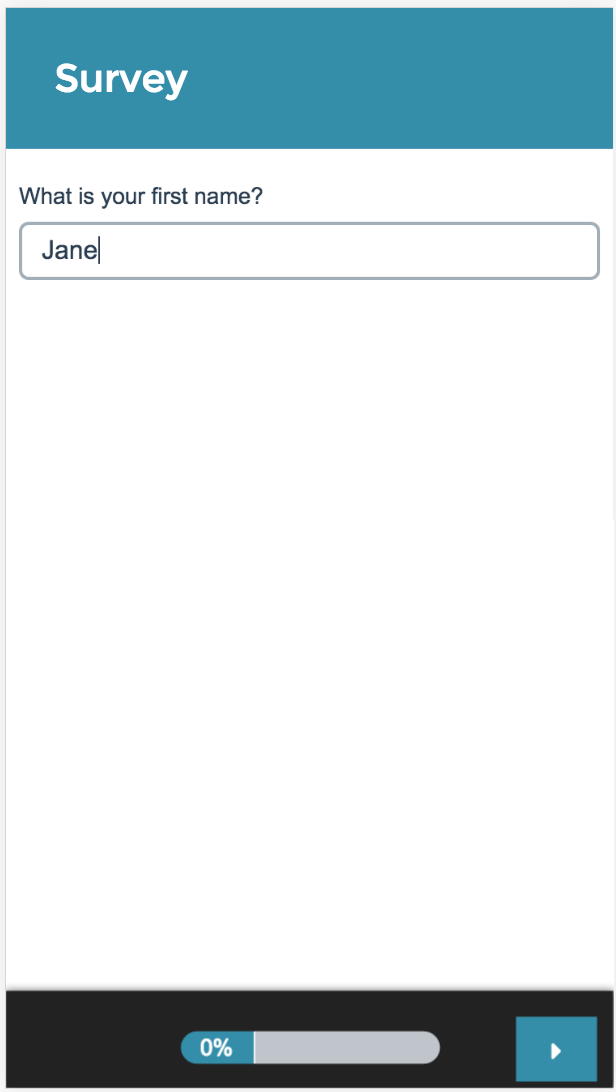
- Check it out in an example survey!
- Add a survey with this question to your account!
A Textbox question is a short-answer, open-text field.
When To Use It
Use Textbox questions to collect a single word or short sentence response. For example, name, street address, or city. We have yet to find a character limit on the amount of data this question type can collect. Still not sure which text field to select? Check out our tutorial on Textboxes vs. Essay.
Best Practice Tip
Because Textboxes do not have validation settings by default, the data from a textbox question can get pretty messy. Never Fear! There are a couple of tools to help assist you with collecting cleaner data!
- One of the quickest methods for cleaning up data entered into textbox questions is to select the option on the Validation tab to Capitalize each word. This will clean up your reporting a bit by eliminating case-sensitivity as a variation in your data.
- We have Basic and Advanced Validation tools available on the Validation tab to ensure respondent entries are in a format you expect.
- Our Auto Suggest Answers feature will suggest answers while the survey respondent types.
- Finally, if you know the list of possible answers and want to ensure that your data is tidy, use a Dropdown Menu question type instead!
Textbox Layout Options
- Left or right labels for your question can be added on the Question tab via the Left Label and Right Label fields.

- The width of the textbox can be adjusted on the Layout tab via the Texbox Width field.

Textbox Validation Options
There are a number of validation options available for Textbox questions. While specific question types exist to collect Email, Percent, and Number formatted text, a Textbox question itself can also be formatted to collect these types of input.
Learn more about the numerous validation options here.
Min & Max Character Count
The Validation tab of your Textbox question also allows you to specify both the Min Character Count and Max Character Count for the text that your respondents will be entering.

Input a number value into each field to specify a character count. Spaces are counted towards both the min & max counts.
The Textbox Question Type has a max character count of 9,999 if a max character count is not provided.
Survey Taking
On a desktop and most laptops, the Textbox question type looks like so.

When optimized for mobile devices the Textbox question type looks very similar.
By default, survey questions show one at a time on mobile devices to prevent the need for scrolling on smaller screens. You can turn off this one-at-a-time interaction if you wish.

Reporting
In Standard Reports an unvalidated textbox question will report as an Open Text Response Table, by default.

This can be changed in the Report Options or Individual Element Layout & Options, to be a Word Cloud, with a list of the responses below.

If you are using number validation on a Textbox question your data will report as a Number question reports.
If you are using email validation on a Textbox question your data will report as an Email question reports.
If you are using date validation on a Textbox question your data will report as a Date question reports.
If you are using percent validation on a Textbox question your data will report as a Percent question reports.
See additional compatible chart types
Within the Standard Report there are various chart types available for visualizing your data. The below grid shows which of the chart types Textbox questions are compatible with.
| Chart Type (Aggregate) | Compatible | |
|---|---|---|
| Word Cloud | ||
| Collapsed Response List | ||
| Contact Cards | ||
| DIY Grid/Cards |
See what other report types are compatible
The below grid shows which of the report types Textbox questions are compatible with. If you plan to do some specific analysis within Alchemer this report compatibility chart should help you choose the right question types!
| Report Type | Compatible |
|---|---|
| Standard | |
| Legacy Summary | |
| TURF | |
| Profile | |
| Crosstab | |
| Comparison | (not available as source question) |
Exporting
In the CSV/Excel export, the data is displayed in a single column within the spreadsheet.


